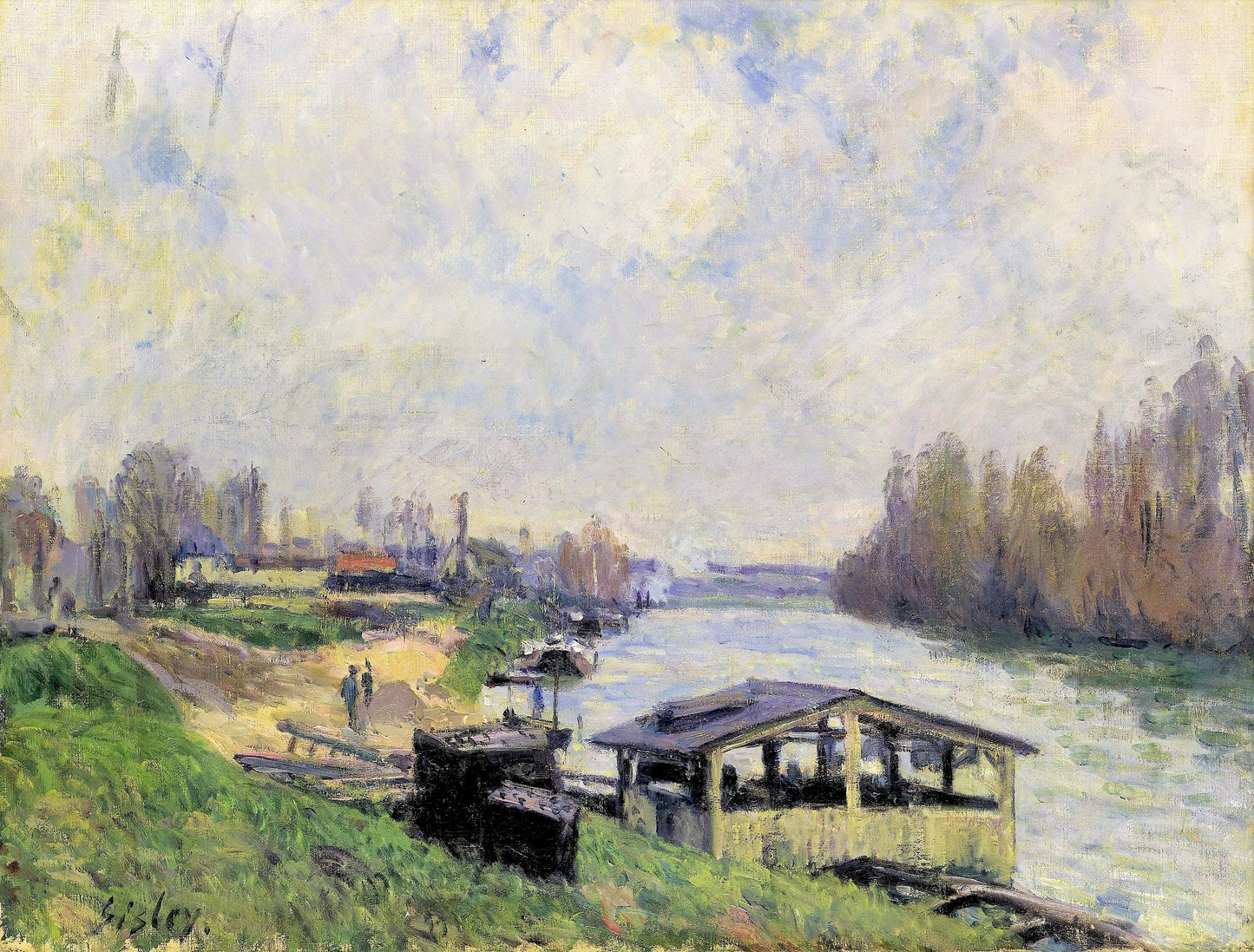A key figure of the Impressionist movement, Alfred Sisley dedicated his practice to capturing the ever shifting moods of the natural world. He portrays the light, atmosphere, seasonality, and the quiet serenity of rural life.
In Le Lavoir de Billancourt, painted just outside of Paris, Sisley offers a serene vision of daily rhythms: women at the communal washhouse, the stillness of trees mirrored on water, and the architecture of a world not yet consumed by industry. His delicate palette and brushwork transform the scene into a moment suspended in time.
Sisley’s work serves as a gentle reminder of the quiet power of looking. In a post-pandemic world, where many have turned away from dense urban life in search of calm, his landscapes feel strikingly present. Though painted in the 19th century, Le Lavoir de Billancourt captures a vision of peace and open space that feels acutely relevant today—echoing the very kind of escape so many now seek. We all seek to be surrounded by nature, just as other artists from the show tend to constantly reference nature and the need for it around it. Either to observe it, take care of it, or simply remind us of the healing power it holds.
Sisley exhibited alongside Monet, Pissarro, and Renoir, yet his focus on pure landscape set him apart. Posthumously, his recognition grew. Today his works are held in leading museum collections, including the Musée d’Orsay, the National Gallery (London), the Metropolitan Museum of Art, and the Art Institute of Chicago.


